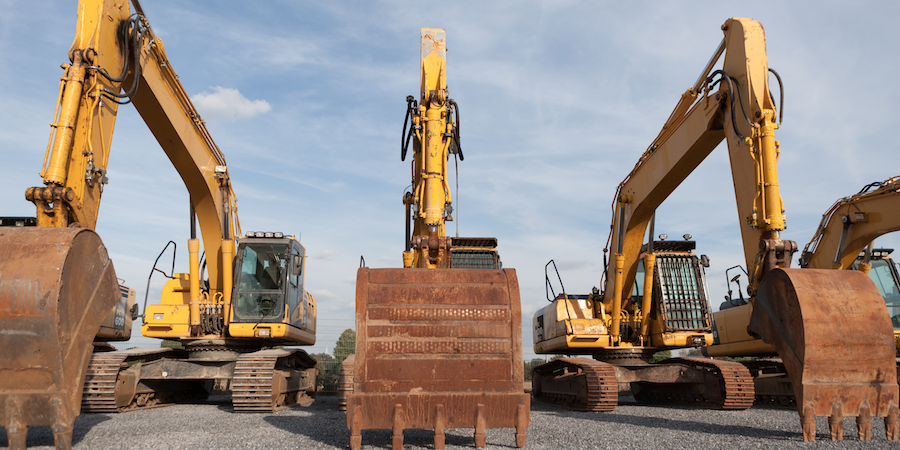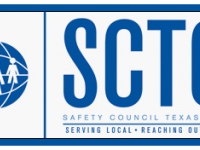Job gains resume in May; spending grows in April; Beige Book notes expansionEditor’s note: Construction Citizen is proud to partner with AGC America to bring you AGC Chief Economist Ken Simonson's Data DIGest. Check back each week to get Ken's expert analysis of what's happening in our industry.Nonfarm payroll employment increased by 175,000, seasonally adjusted, in May and 2,115,000 (1.6%) over 12 months, the Bureau of Labor Statistics reported today. Construction employment rose by 7,000 for the month and totaled 5,804,000, seasonally adjusted, the highest mark since August 2009 and a gain of 189,000 (3.4%) over the past year. Total hours worked in construction increased by 5.2% over 12 months, implying that contractors are lengthening working hours and also hiring new workers. Residential construction employment (residential building and specialty trade contractors) rose by 5,500, seasonally adjusted, for the month and 94,400 (4.6%) for the year. Nonresidential employment (building, specialty trades, and heavy and civil engineering construction) rose by 1,700 and 95,500 (2.7%), respectively. Architectural and engineering services employment, a harbinger of future demand for construction, rose 2.1% over the year. The unemployment rate for jobseekers who last worked in construction tumbled to the lowest May level in five years--10.8%, down from 14.2% in May 2012 and a May high of 20.1% in 2010. The number of unemployed former construction workers shrank by 259,000 over the year, implying that workers are leaving the industry as well as being rehired. (Industry unemployment data are not seasonally adjusted and should only be compared year-over-year, not across months.)
Reshaping the Construction Industry
Following my interview earlier this year with Gregg Reyes, President and CEO of Reytec Construction Resources, Inc, I visited Steven Aranda near the Galleria area of Houston. Aranda is a Project Manager with the company, and he was happy to show me some of the projects Reytec has worked on in that area, and to explain how Reytec has grown in order to provide the various types of service their clients need.The area is part of the Uptown District, one of several Tax Increment Reinvestment Zones (TIRZs) in Houston. TIRZs are special zones created by the Houston City Council to attract new investment to specific areas within the city. Houston has several of these special tax zones, but not all of Houston falls into one of them. Within each of these zones, certain taxes are set-aside in a fund to finance public improvements within the boundaries of that zone.
June 06, 2013
While lawmakers in Texas this year took a pass on a broad crackdown on companies that misclassify their workers, other states are ramping up their efforts. In Connecticut, for example, the state issued Stop Work orders to nearly 30 companies found to have been misclassifying their workers. The Connecticut Department of Labor says that they issued these Stop Work orders and slap penalties on companies that misclassify workers as independent subcontractors "with the intent of avoiding their obligations under federal and state employment laws covering such matters as workers' compensation, unemployment taxes and payroll reporting. The civil penalty for misclassification in Connecticut is $300 per worker for each day the employer does not carry workers' compensation as required by state law.While those numbers are significant, here's the real windfall from the state's efforts to deal
June 05, 2013
On Wednesday, March 20th, Construction Career Day was held on the Warren High School campus in San Antonio, Texas – the site of Northside Independent School District’s Construction Careers Academy. Over 350 students from high schools around NISD attended the one day event. Overall, 450 students, instructors, and industry contractors were in attendance.There were 30 construction contractors at the event demonstrating their tools and equipment. Demonstrations included wall building, surveying, electrical wiring, plumbing, welding, and tool-use competitions.Each student who attended received a hard hat, a T-shirt, and safety glasses. Additionally, over $2,000 worth of tools were given away at the event. At the job fair area of the event, contractors actively recruited qualified students for summer and full-time employment.NISD has realized that there will be an increased demand for skilled construction workers in the future. The baby boomers that hold a majority of the positions in the industry are quickly reaching retirement age. When they retire, the need to fill their positions will be enormous.
June 04, 2013
Half of metros gain construction jobs in past year; Reed says starts sag from a year agoEditor’s note: Construction Citizen is proud to partner with AGC America to bring you AGC Chief Economist Ken Simonson's Data DIGest. Check back each week to get Ken's expert analysis of what's happening in our industry.Click here to view April metro employment tables. Nonfarm payroll employment increased in April from a year earlier in 274 out of 372 metropolitan areas, decreased in 88 and remained unchanged in 10, the Bureau of Labor Statistics reported on Wednesday. An AGC analysis showed that of the 339 metro areas (including divisions of larger metros) for which BLS reports construction employment, 170 had increases, 123 had decreases and 46 were stagnant. (BLS combines mining and logging with construction in most metros to avoid disclosing data about industries with few employees. Metro data is not seasonally adjusted.) Pascagoula, Miss. again added the highest percentage of new construction jobs (45%, 1,700 combined jobs), followed by Napa, Calif. (36%, 800 combined jobs)
June 03, 2013
A bill to authorize more than $2 billion in construction projects at college campuses across Texas could get another shot at passage during the special session of the Texas Legislature. As the Houston Business Journal reported, the bill ran into problems at the end of the regular session, which concluded Monday in Austin. After the Senate passed its version of the bill, the House made changes and the two chambers didn't come to an agreement on what a final deal should look like. Lieutenant Governor David Dewhurst said that when you're considering such a large package of what are called "tuition revenue bonds," or TRB's, it's bad public policy to not have the House and Senate talking to each other about it. But now Kate McGee at KUT in Austin reports that Senator Kel Seliger, R-Amarillo, has re-filed the proposal and hopes that Governor Perry will get on board. By law, only the governor has the authority to add topics to the special legislative session. For now, Perry has said the legislature needs to focus solely on redrawing political maps.
May 31, 2013
No, that is not in reference to the rise in births after the storms on the East Coast, it refers to the shortages in skilled labor that are beginning to be a real concern for the general contractors and subcontractors in the region as the economy rebounds and the energy industry grabs the workers it needs for the shale plays in West Texas. According to a recent article in the Houston Business Journal (HBJ), three major factors are in play right now, and even though they appear positive on the surface, they could also create problems for the construction workforce in the Houston region and the rest of the country. First, during the recession, the construction industry unemployment passed 20 percent across the U.S. as construction of all sorts was cut back or shut down in response to the economy. As the recession continued and many workers could not find work, they moved to new jobs, retired, or even went back to Mexico in hopes of finding a way to support their families there.
May 30, 2013
Comprehensive workers' compensation reforms in Tennessee could end up being a model for the nation. A new state agency will be handling the claims and Governor Bill Haslam signed legislation that puts penalties in place for premium fraud. They're taking the workers' compensation claims out of the court system and handing it off to that new agency. This legislation was recommended by the Misclassification Advisory Task Force of Tennessee:"HB 551/SB 833 Administrative penalties for premium fraud: (1) Allows the labor department to fine construction service providers for workers’ compensation premium fraud. (2) Penalty money to be deposited into an enforcement fund and such fund can be used to purchase a data system for identifying potential violators and for hiring additional investigators.
May 29, 2013
The Construction Career Collaborative (C3) announced last week that they are taking applications for the next C3 Train the Trainer session. The Train the Trainer course is where C3 Trainers are credentialed to deliver the new C3 5-Hour Safety Awareness Course that is included in the General Conditions and Specifications for C3 projects. The C3 5-Hour course is intended to complement the OSHA 10-Hour course and addresses hazards specific to a commercial construction site. The course also includes information on the Construction Career Collaborative and its efforts to improve the health and well-being of the craft worker.To date, over 40 trainers have received their credentials with 36 Houston companies participating. C3 Trainers are required to have successfully completed the OHSA #500, have experience in health and safety, and hold a proven record of training.
May 28, 2013
Most states added construction jobs last year but not in April; starts fell, MHC saysEditor’s note: Construction Citizen is proud to partner with AGC America to bring you AGC Chief Economist Ken Simonson's Data DIGest. Check back each week to get Ken's expert analysis of what's happening in our industry.Click here to view April PPI table and here to view April state employment data.In April, seasonally adjusted nonfarm payroll employment increased from a year earlier in 47 states and the District of Columbia and decreased in three states, the Bureau of Labor Statistics reported on May 17. Seasonally adjusted construction employment climbed in 29 states and fell in 21 states and the District of Columbia, an AGC analysis showed. Hawaii had the largest percentage gain in construction jobs (11.5%, 3,300 jobs), followed by Alaska (9.1%, 1,500 jobs) and Louisiana (8.1%, 10,200 jobs). California added the most new construction jobs over the past 12 months (44,800, 7.7%), followed by Texas (41,500 jobs, 7.1%). Vermont lost the highest percentage (-11.3%, -1,700 jobs), followed by South Dakota (-9.6%, -2,100 jobs) and Rhode Island (-8.6%, -1,400 jobs). Illinois lost the most jobs (-12,900 jobs, -6.8%), followed by Ohio (-9,200 jobs, -5.0%) and Indiana (-5,600 jobs, -4.4%).
May 28, 2013



.jpeg?itok=6uFZXEBH)





.jpeg?itok=4Vi_1nJG)































